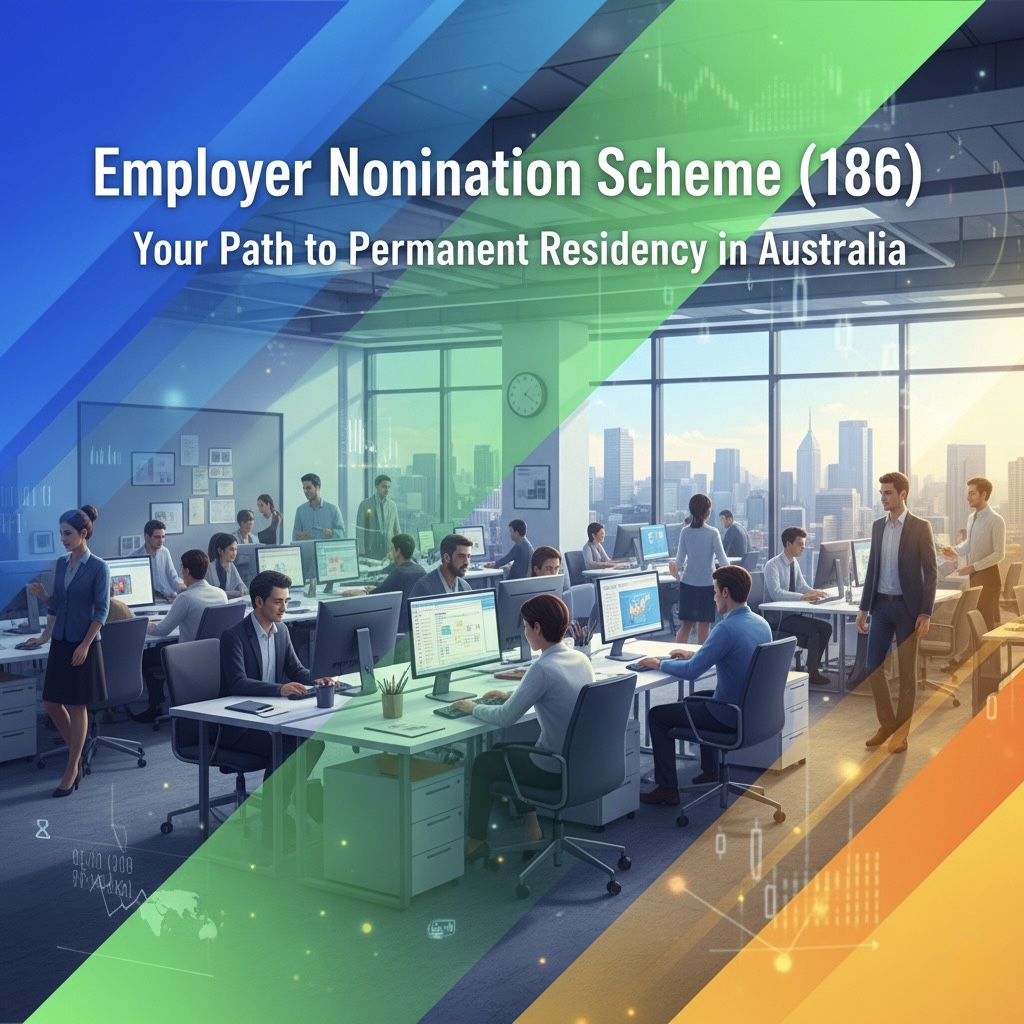Learn how to qualify for the Employer Nomination Scheme (186) visa. Step-by-step eligibility, requirements, and tips for skilled migration to Australia.Employer Nomination Scheme (186): Eligibility & Requirements
Introduction
The Employer Nomination Scheme (subclass 186) visa offers a clear, step-by-step pathway for skilled professionals seeking permanent residency in Australia. This guide breaks down the process, eligibility, and requirements so you can confidently pursue your skilled migration journey.
Step 1: Understand the Employer Nomination Scheme (186) Visa
The Employer Nomination Scheme (ENS) 186 visa is a permanent residency visa for skilled workers nominated by an approved Australian employer. It is designed for immigration for professionals who have the skills Australia needs and want to live and work permanently in the country.
Key Streams
- Temporary Residence Transition Stream: For those who have worked for their employer in Australia on a 457 or 482 visa for at least three years.
- Direct Entry Stream: For skilled professionals applying directly from overseas or those not eligible for the transition stream.
- Labour Agreement Stream: For workers nominated under a formal agreement between the employer and the Australian government.
Step 2: Check Your Eligibility
Before applying, ensure you and your employer meet all the requirements. The main eligibility criteria include:
For the Applicant
- Nominated by an Approved Employer: You must be nominated for a skilled occupation by an Australian employer approved by the Department of Home Affairs.
- Age Limit: Generally, you must be under 45 years old at the time of application (some exemptions apply).
- Skills and Qualifications: You need a positive skills assessment for your nominated occupation and at least three years of relevant work experience. Your qualifications should be equivalent to Australian standards.
- English Proficiency: Achieve a minimum score of 6.0 in each component of IELTS or equivalent (exemptions for citizens of the UK, USA, Canada, New Zealand, or Ireland).
- Health and Character: Pass medical exams and police checks.
- Licensing/Registration: Meet any mandatory licensing, registration, or membership requirements for your occupation.
For the Employer
- Active and Lawful Business: The employer must be actively trading and legally operating in Australia.
- Genuine Need: The position must be full-time, ongoing for at least two years, and genuinely needed within the business.
- Salary and Conditions: The salary must meet market rates, and working conditions must match those for Australian employees in similar roles.
- Labour Market Testing: Employers must show they have advertised the role locally before nominating a foreign worker.
- Training Requirement: Employers must demonstrate investment in training Australian staff.
Step 3: The Application Process
Stage 1: Employer Nomination
- The employer submits a nomination to the Department of Home Affairs, including proof of business registration, financial stability, and a detailed job description.
- Evidence must be provided to justify the need for a skilled migrant and to show compliance with all sponsorship obligations.
Stage 2: Visa Application
- Once the nomination is approved, the applicant lodges a visa application within six months.
- Submit all required documents: skills assessment, proof of work experience, English test results, health and character certificates, and any licensing or registration proof.
Stage 3: Final Steps and Approval
- The Department reviews both the nomination and visa application.
- If approved, the applicant and eligible family members are granted permanent residency under the Australia 186 visa.
Tips for a Successful 186 Visa Application
- Start Early: Skills assessments and gathering documents can take several months.
- Double-Check Eligibility: Ensure you meet all 186 visa skill requirements before applying.
- Accurate Documentation: Provide clear, complete evidence for all claims, especially work experience and qualifications.
- Monitor Occupation Lists: Your occupation must be on the Medium and Long-Term Strategic Skills List (MLTSSL).
- Seek Professional Advice: Consider consulting a migration agent for complex cases or if you are unsure about eligibility.
Conclusion
The Employer Nomination Scheme (186) visa is a leading pathway for skilled migration to Australia. By following each step carefully and understanding both employer and applicant requirements, professionals can achieve permanent residency and unlock new opportunities in one of the best countries for skilled migration. Take the next step today and begin your journey toward a new life in Australia.





